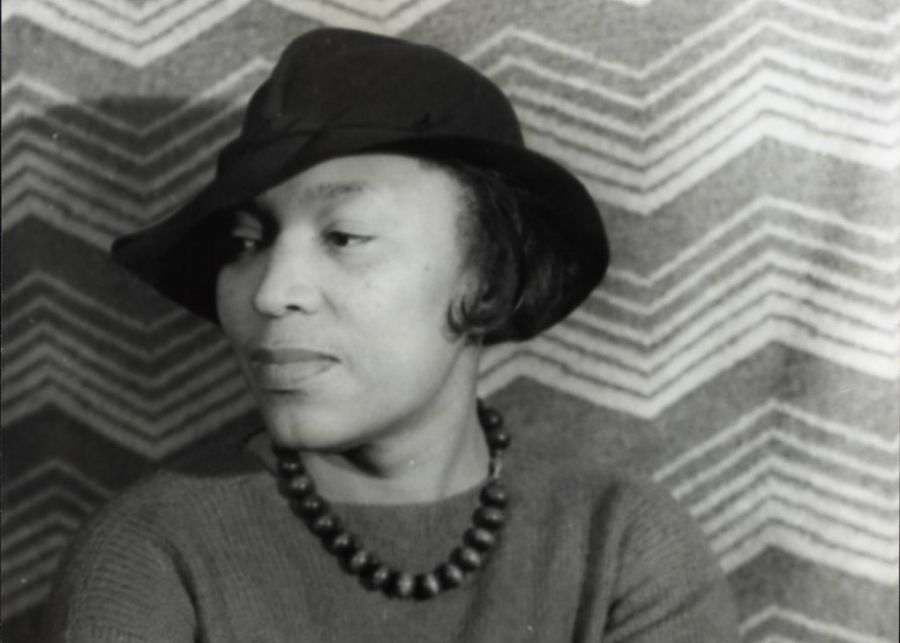January 1836 (185 years ago)
On land that previously housed Lion Tavern and the Lamb Tavern, the curtain goes up for the first time at the Lion Theatre on Washington Street in Boston. The theatre and the block on which it is situated will go through numerous physical changes and will be a home at various times to a myriad of performance genres, including equestrian melodrama, vaudeville, and opera. It will undergo name changes, including the Mechanics Institute, Melodean Varieties, the Bijou Theatre, and the Gaiety, and remain a site of performance into the 21st century, when it will be called the Emerson Paramount Center and house many performance and rehearsal venues, including ArtsEmerson’s Robert J. Orchard’s Stage.
January 1891 (130 years ago)
Author, playwright, folklorist, and filmmaker Zora Neale Hurston is born in Alabama. Though she will be most famous for her novel Their Eyes Were Watching God, Hurston will also prove to be a prolific playwright who will eventually deposit several unpublished plays, written between 1925 and 1944, in the U.S. Copyright Office. The playscripts will reveal Hurston’s deep knowledge of Black and Caribbean folklore. Hurston’s heirs will discover the existence of the plays in the early 1990s through a copyright search, and staffers at the Library of Congress will first lay their hands on hard copies of 10 plays in 1997. As a result of the recovered plays and the popularity of informal readings hosted by the Library of Congress, Arena Stage in D.C. will finally produce the world premiere of Hurston’s Polk County in 2002 to great critical success.
January 1911 (110 years ago)
Rose Louise Hovick, who will be better known by her stage name Gypsy Rose Lee, is born in Seattle. Hovick will become famous as a burlesque dancer and striptease artist admired for her wit and style. In 1957, she’ll publish Gypsy: A Memoir, which will be the source material for the iconic musical Gypsy, with music by Jule Styne, lyrics by Stephen Sondheim, and book by Arthur Laurents. The musical will have four Broadway revivals after its debut in 1959.
January 1931 (90 years ago)
Alvin Ailey is born in Rogers, Texas. After getting his start as a dancer in Los Angeles, where he’ll study with Lester Horton, Ailey will dance in several Broadway and Off-Broadway musical productions. In 1959 he’ll establish Alvin Ailey Dance Theatre with eight Black dancers. Within a year, the company will be named the resident company of the Clark Center for the Performing Arts in New York City. By the 1970s the company will tour the world with backing from the U.S. State Department and will become one of America’s most popular dance troupes. Revelations, destined to be Ailey’s best known work, will premiere in 1960, to endure as a cultural touchstone for generations of dancers and audiences. Ailey’s work Cry, a solo initially danced by Judith Jamison, will be dedicated to “all Black women everywhere—especially our mothers.”
January 1961 (60 years ago)
Zero Mostel opens in Eugène Ionesco’s absurdist comedy Rhinoceros at the Longacre Theatre on Broadway, and for 256 performances will nightly transform from a man into the eponymous beast. The performance will win him the first of three Leading Actor Tonys—welcome recognition after almost a decade of being blacklisted after a colleague will label Mostel a member of the Communist Party before the House Un-American Activities Committee. During his own appearance before HUAC, Mostel will refuse to name names, while strongly and comically asserting his right to privacy of his political views.
January 2001 (20 years ago)
Writer and performer Dael Orlandersmith opens Monster at ACT (A Contemporary Theatre) in Seattle. In this Obie-winning solo play, she channels nine characters in the life of Theresa, a young woman growing up in Harlem. Orlandersmith will go on write such works at Yellowman and Until the Flood.


